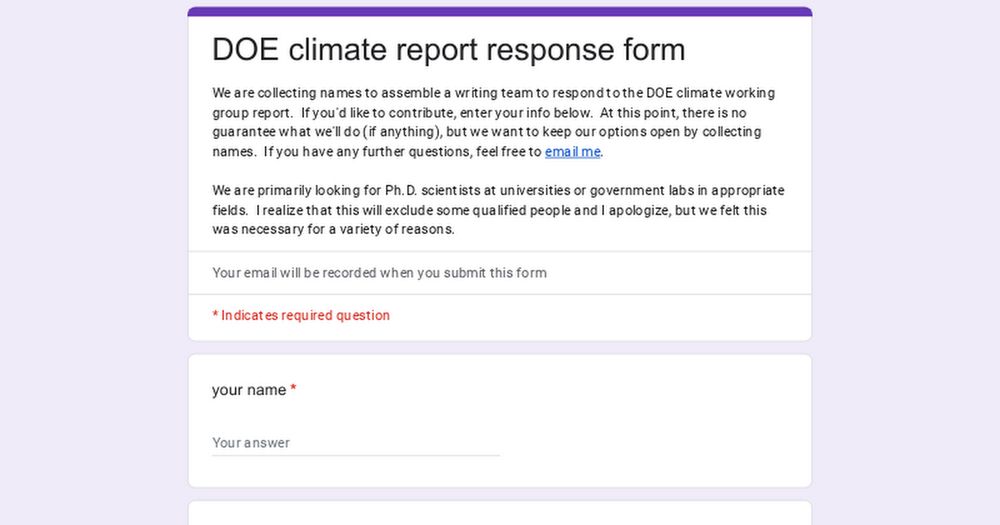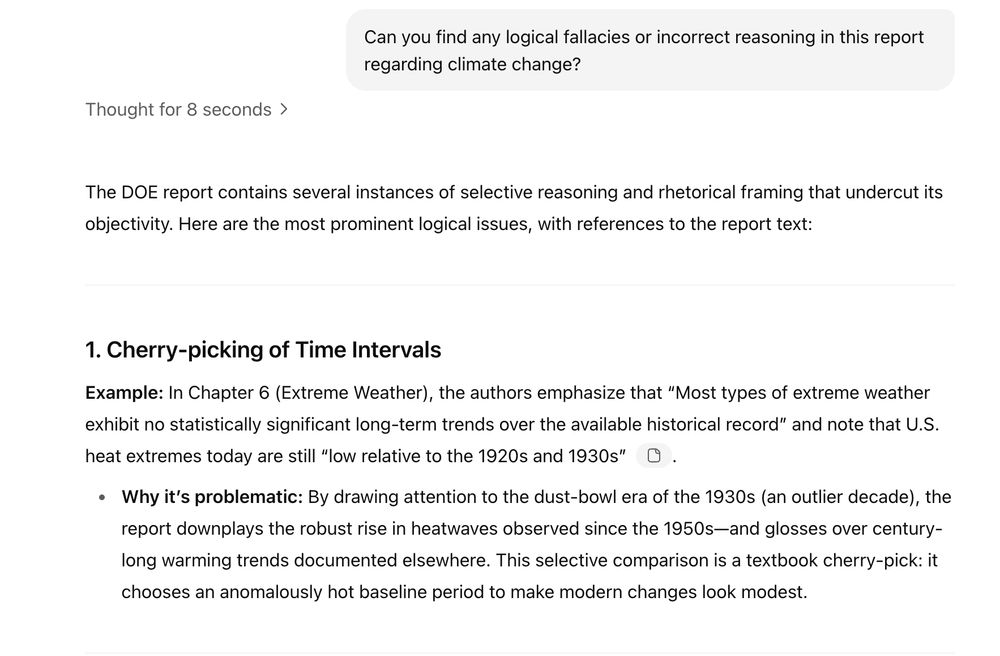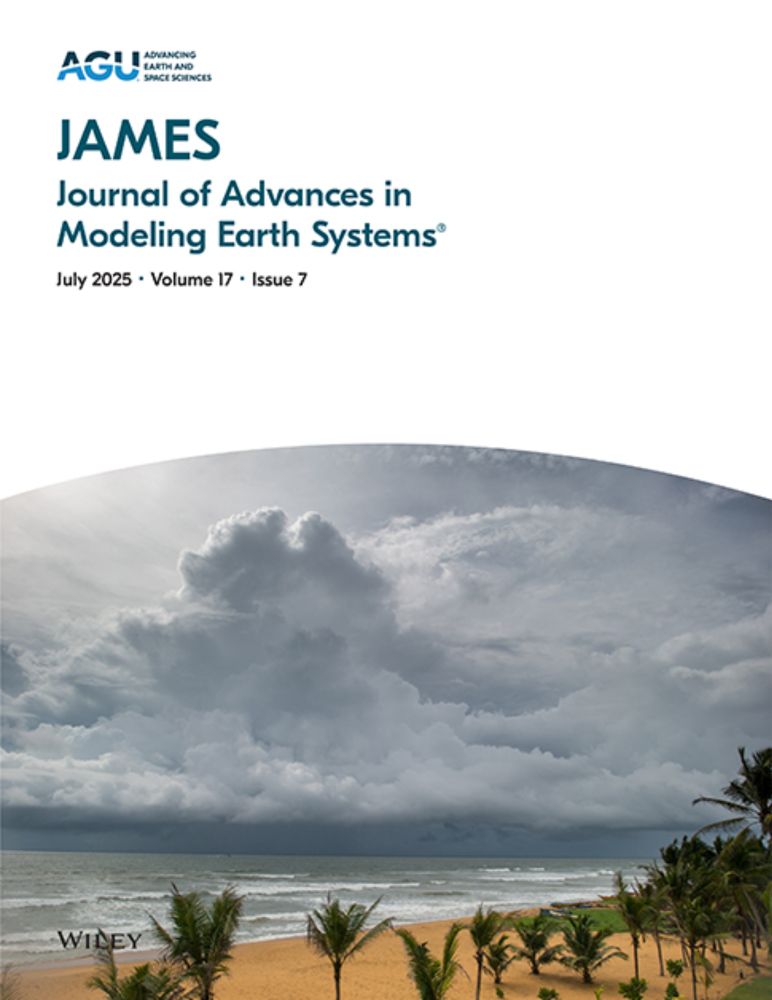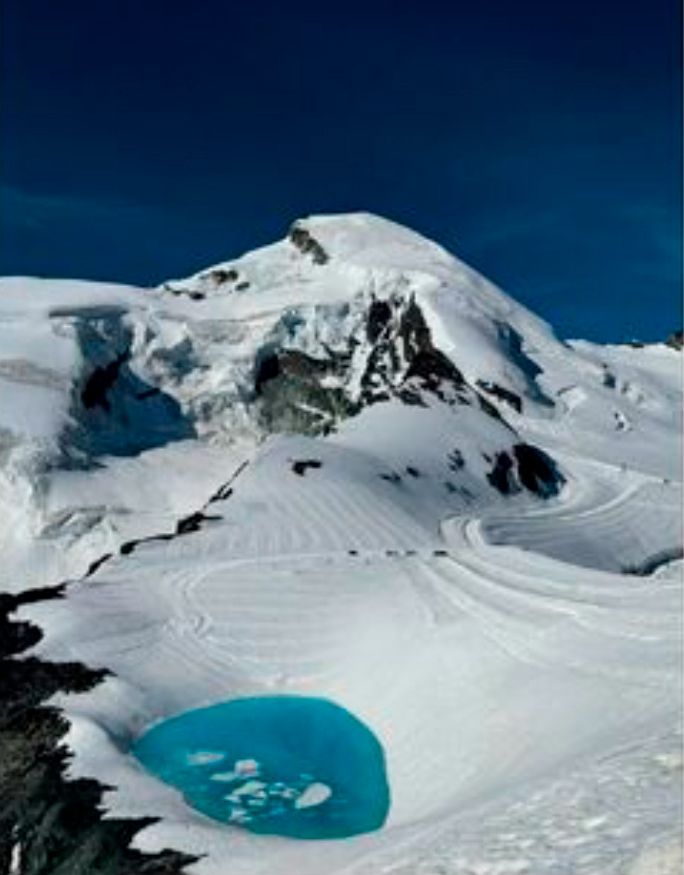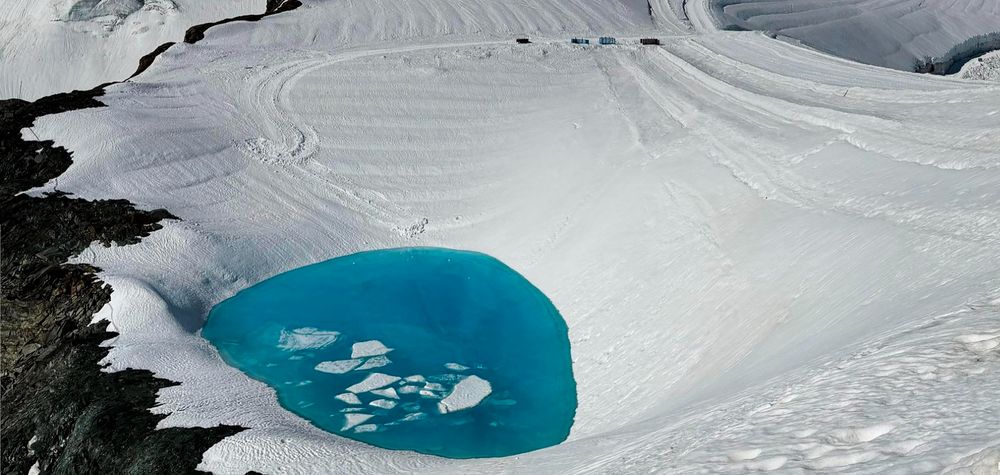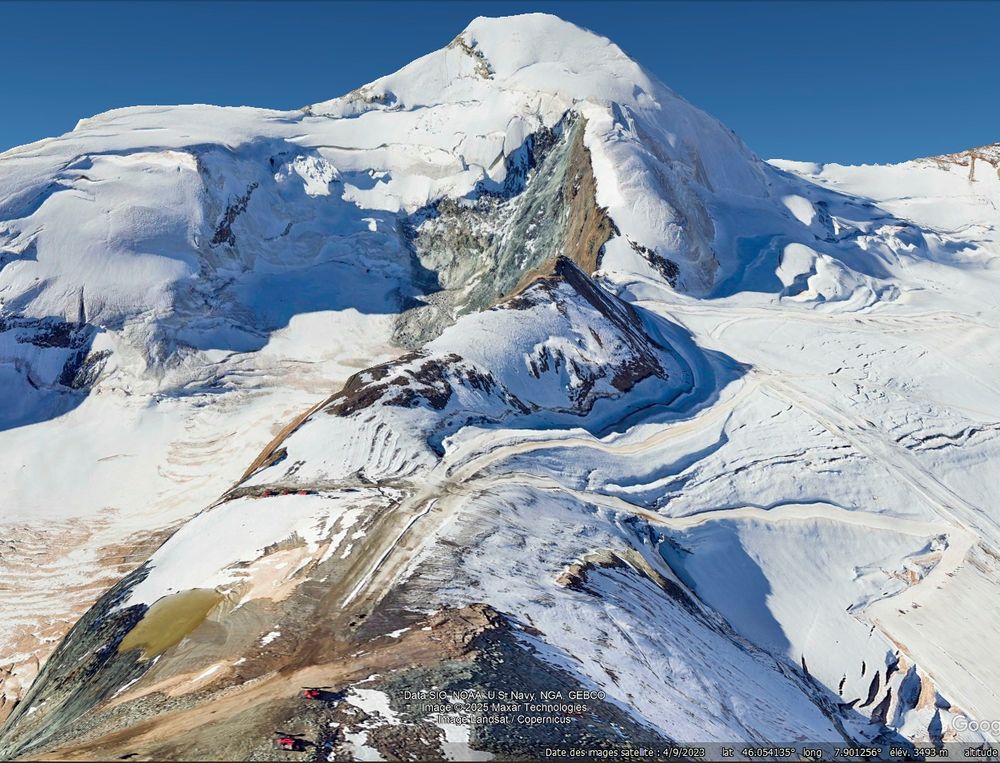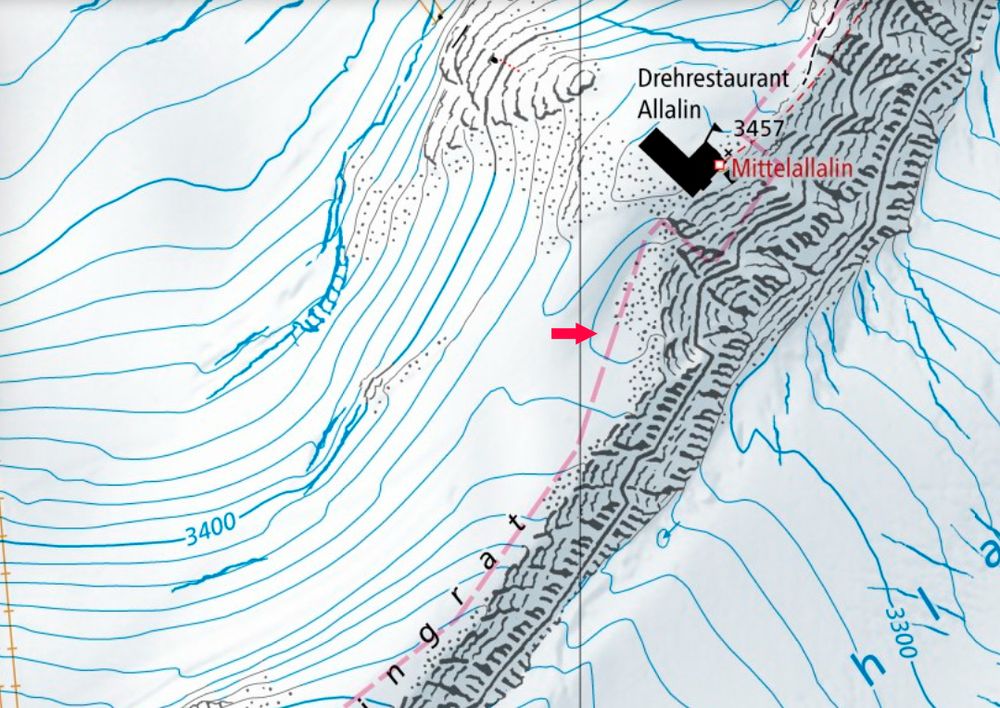YouTube video by CTV News
Climate change was made up by ‘stupid people’: Trump
Trump says climate change predictions were made by "stupid people". I guess I'm a stupid person who now has a chip on my shoulder to make good climate science and show the real stupid people are the ones in the government who are actively trying to burn the world. www.youtube.com/shorts/hhax2...
24.09.2025 08:38 — 👍 7 🔁 1 💬 0 📌 0
The EPA is attempting to repeal its endangerment finding for GHGs—threatening decades of climate progress.
📢 Register by 12 Aug to testify at the virtual hearings (19–20 Aug): EPA-mobilesource-hearings@epa.gov
🗣️ Speak up. Science must be heard.
#ActOnClimate #AGU
07.08.2025 10:45 — 👍 4 🔁 5 💬 1 📌 2
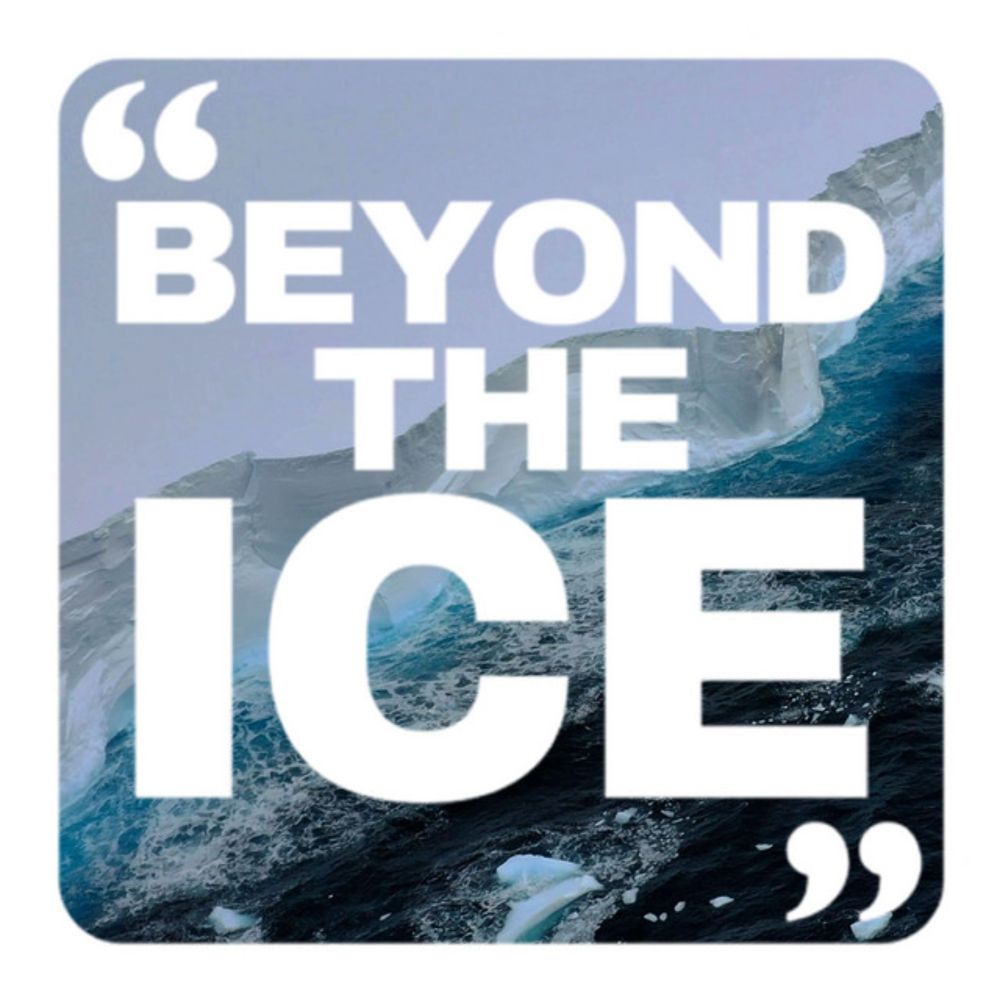
10: How do we actually *know* Antarctica is melting? | Dr Michelle Maclennan
Beyond the Ice · Episode
In case you need a podcast listen for the weekend, we recommend Beyond the Ice from the British Antarctic Survey. Check out the latest episode where Dr. Michelle Maclennan discusses the state of extreme weather over Antarctica and recent ice mass increases open.spotify.com/episode/30Tu...
01.08.2025 12:46 — 👍 6 🔁 3 💬 0 📌 0
Motherfucking wind farms…
30.07.2025 17:02 — 👍 47004 🔁 17697 💬 1150 📌 2380
This proposal to revoke the Endangerment Finding will prevent the government from regulating greenhouse gas emissions now and even in the future. There will be an opportunity to publicly comment on this proposal and remind the EPA that almost all climate scientists think this report is a joke.
30.07.2025 12:22 — 👍 0 🔁 0 💬 0 📌 0
I've given it a quick read and quickly realized that the sections concerning CO2 as plant food were full of confirmation bias and cherry picking. Further sections about climate change scenarios used strawman arguments. I fed the report into ChatGPT which agreed with my suspicions.
30.07.2025 12:22 — 👍 0 🔁 0 💬 1 📌 0
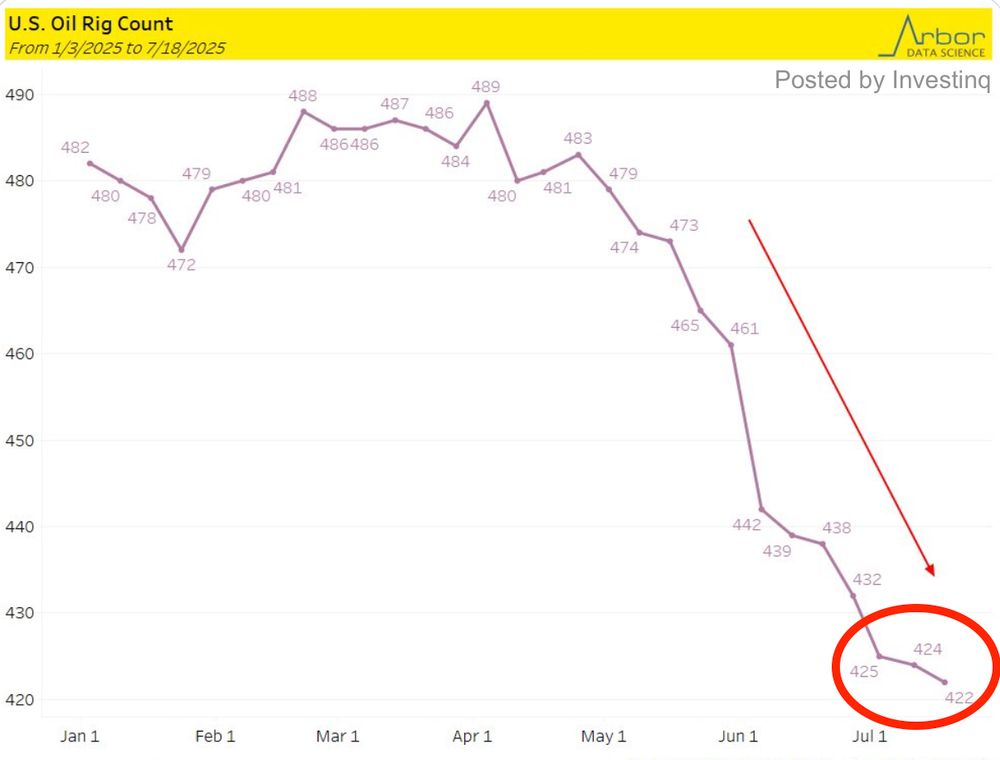
🚨 The U.S. oil rig count just suffered its fastest collapse since the pandemic.
From January to July 2025, rigs dropped 13.7%, the steepest 15-week plunge in five years.
This isn’t just about oil, it’s about inflation, jobs, energy security, and the global economy.
(Save this thread)
27.07.2025 22:13 — 👍 19 🔁 8 💬 2 📌 2
But much more research is needed before these experimental models can be operationalised for local climate services. Again I want to thank my co-authors for supporting this research.
15.07.2025 09:49 — 👍 0 🔁 0 💬 0 📌 0
So is there an added value for using these high resolution, yet limited run time models? It seems mostly a yes for extreme precipitation events, especially as the nextGEMS models compared well with a regional climate model. They can provide coverage to the globally underserved in climate prediction
15.07.2025 09:49 — 👍 0 🔁 0 💬 1 📌 0
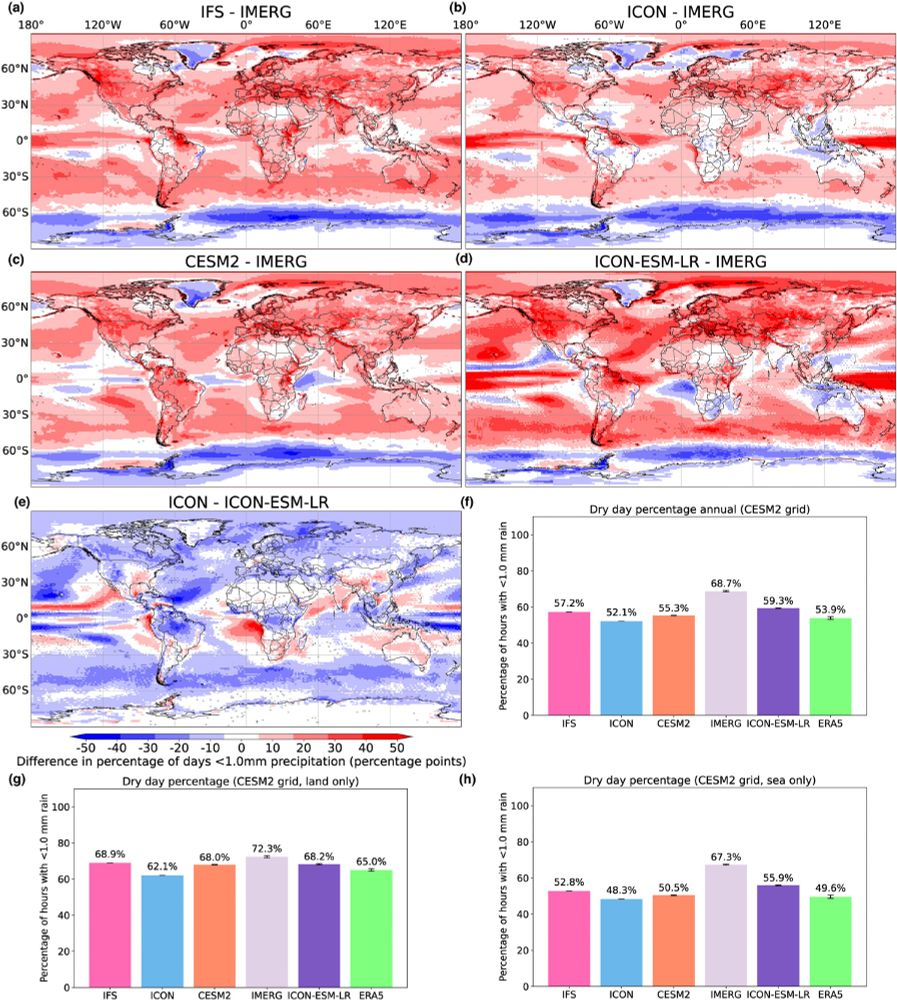
Finally, looking at the global daily dry fraction on a common, coarse resolution, the differences between the models is diminished suggesting that resolution is the main driver of improvements. One big theme though is the difficulty of validating extreme precipitation with Obs and reanalysis.
15.07.2025 09:49 — 👍 0 🔁 0 💬 1 📌 0
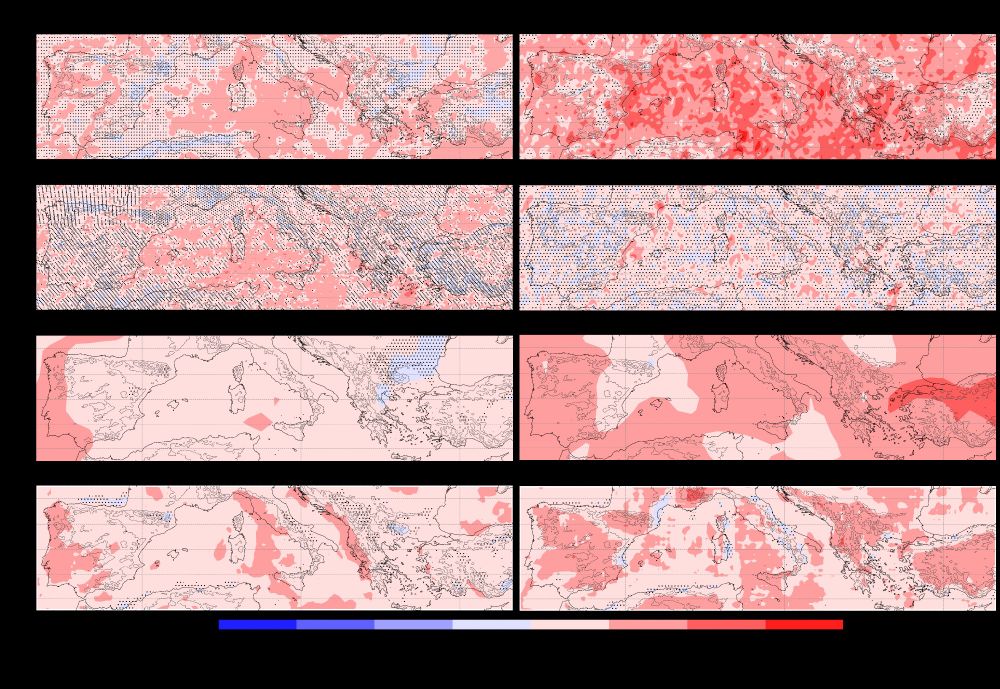
One possible culprit is the missing connection between moisture convergence and extreme precipitation in ICON. The lack of convection parameterization means ICON generates more bubbly, isolated convective cells instead of organized precipitation along frontal boundaries
15.07.2025 09:49 — 👍 0 🔁 0 💬 1 📌 0
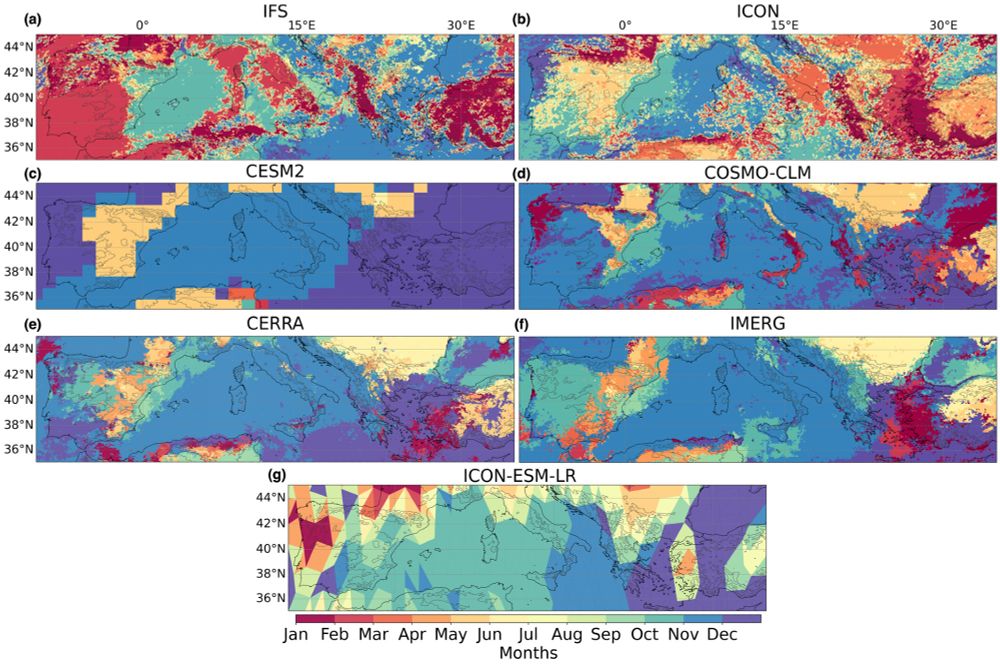
To better understand what factors drive precipitation patterns in the models, we looked at which month contains the most extreme rainfall. Normally autumn is the primary time for extreme weather in the Mediterranean, but ICON misses this meaning a less consistent extreme precipitation forcing
15.07.2025 09:49 — 👍 0 🔁 0 💬 1 📌 0

The benefits of higher resolution are seen again in the 95th quantile of daily precipitation where IFS and ICON show higher rainfall values in mountainous terrain.
15.07.2025 09:49 — 👍 0 🔁 0 💬 1 📌 0
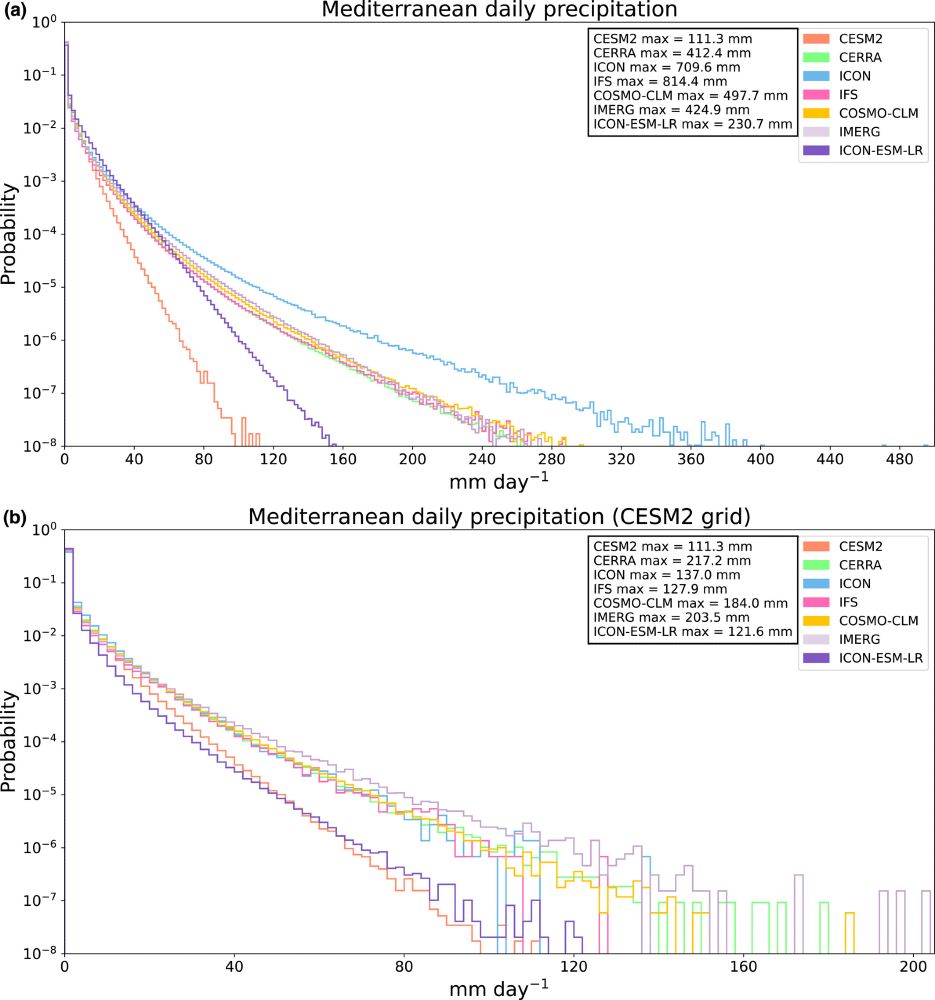
Moving to the high-tail end of precipitation extremes, IFS produced very high, yet reasonable values of extreme rainfall. When controlling for resolution, this improvement over CESM2 persists for both IFS and ICON. This is important for having a climate model directly simulate flooding rains.
15.07.2025 09:49 — 👍 0 🔁 0 💬 1 📌 0
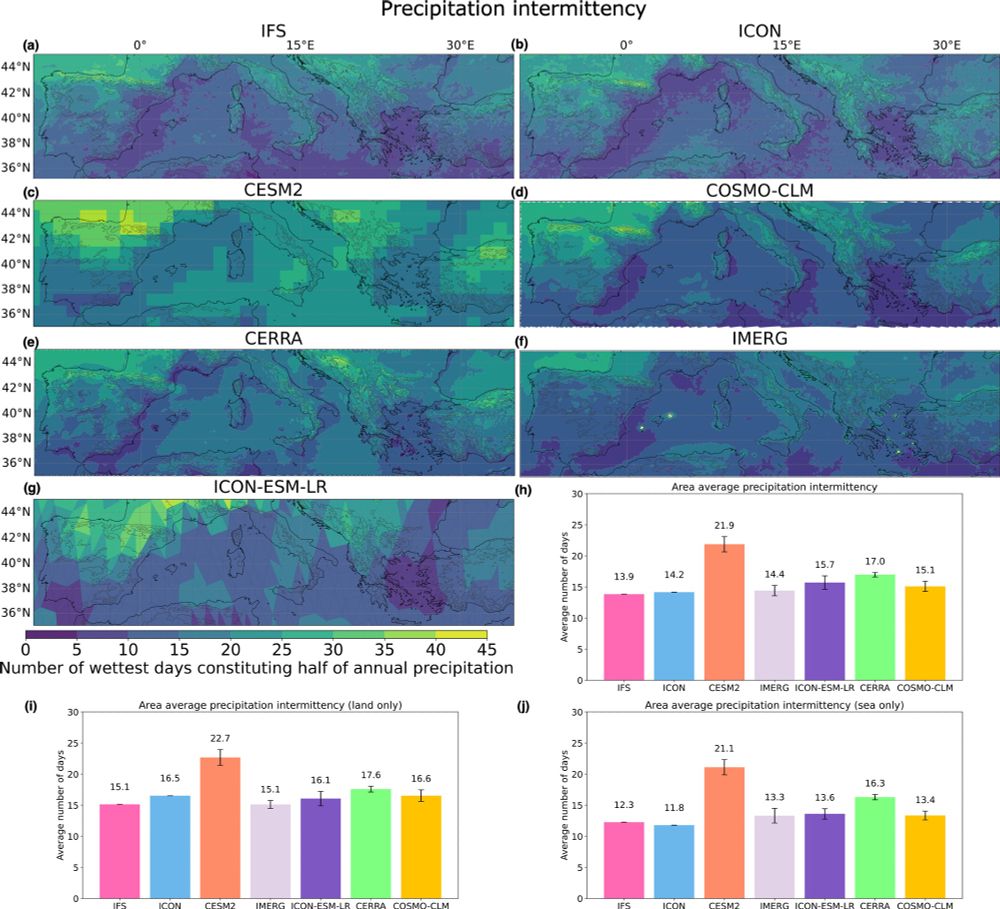
Precipitation intermittency represents how precipitation is distributed during the year. Is it light and frequent, or intense and rare? Here IFS and ICON show clear improvements over the CESM2 which has too diffuse precipitation leading to the common "drizzle bias"
15.07.2025 09:49 — 👍 0 🔁 0 💬 1 📌 0

We know that ICON has no convection parameterization which leads allows it to produce more convective showers and thunderstorms, thus breaking up the dry spells over land. But this also causes the afternoon storms to be far too intense.
15.07.2025 09:49 — 👍 0 🔁 0 💬 1 📌 0
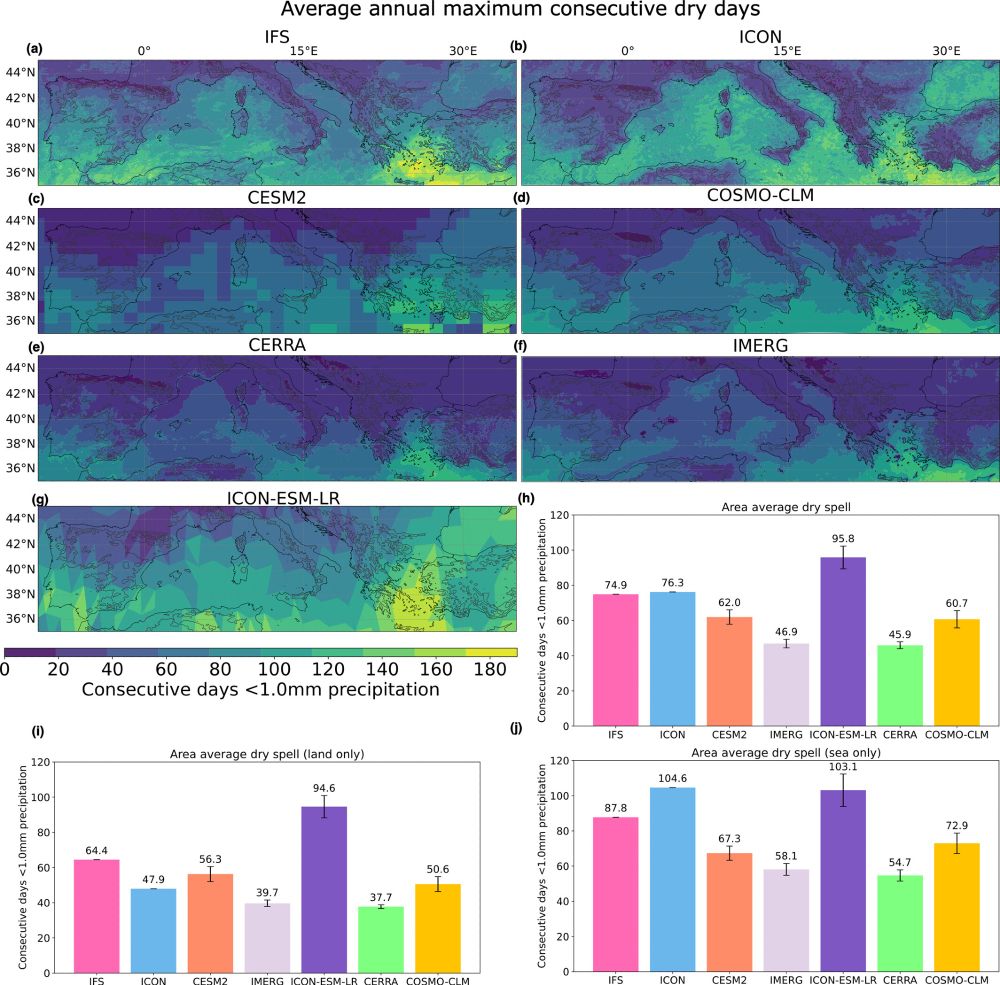
Greater differences are found in the average maximum annual dry spell. Here IFS and ICON produce very long dry spells compared to observations and a coarser global climate model (CESM2). The important exception here is the ICON model over land.
15.07.2025 09:49 — 👍 0 🔁 0 💬 1 📌 0
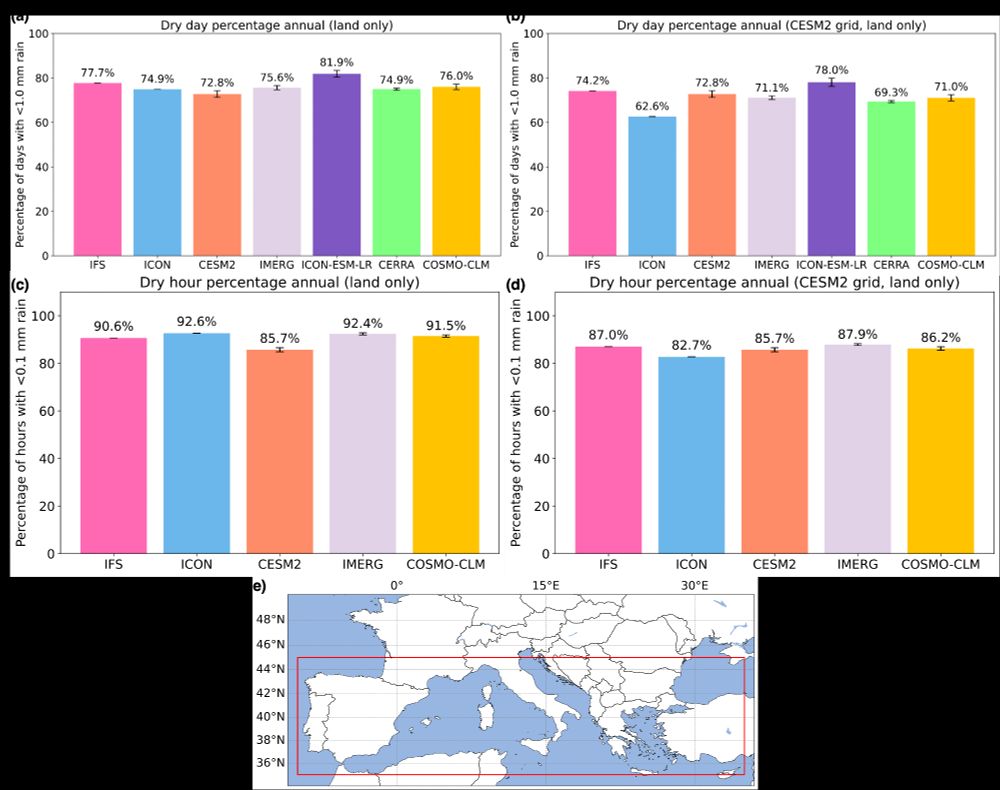
Focusing on the Mediterranean region, we test the added value of having very high resolution for depicting extreme precipitation (drought and flood). Starting with the percentage of days/hours with no rain, we find that the greatest improvements are over land. This is from the higher resolution
15.07.2025 09:49 — 👍 0 🔁 0 💬 1 📌 0
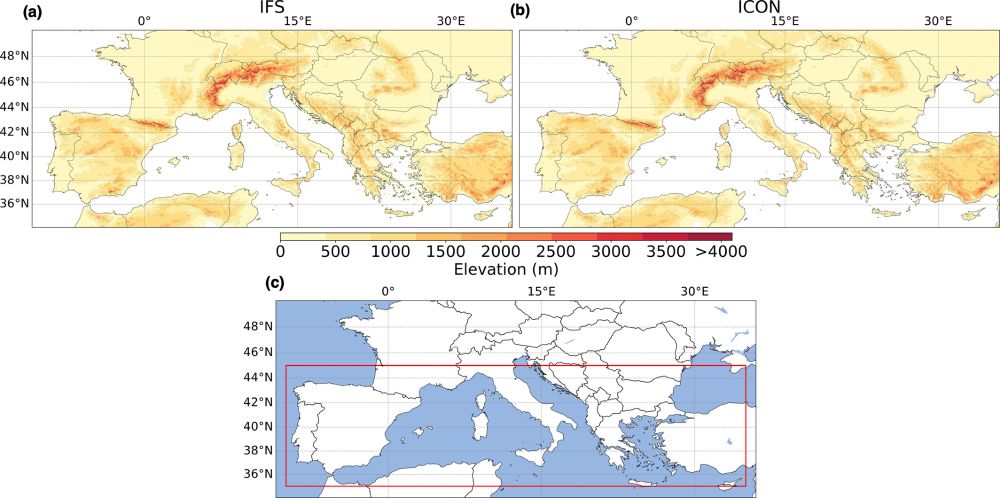
This research focused on two experimental, fully-coupled, convection permitting Earth system models designed within the nextGEMS project. The IFS model has a hybrid convection parameterization scheme and ICON has no convection parameterization. These steps help push the models to higher resolution
15.07.2025 09:49 — 👍 0 🔁 0 💬 1 📌 0

One motivation for developing kilometer-scale ESMs is to better understand how precipitation extremes will change in regions of complex topography. We need to provide local planners with greater detail on how precipitation extremes will challenge their infrastructure as the planet continues to warm
15.07.2025 09:49 — 👍 0 🔁 0 💬 1 📌 0
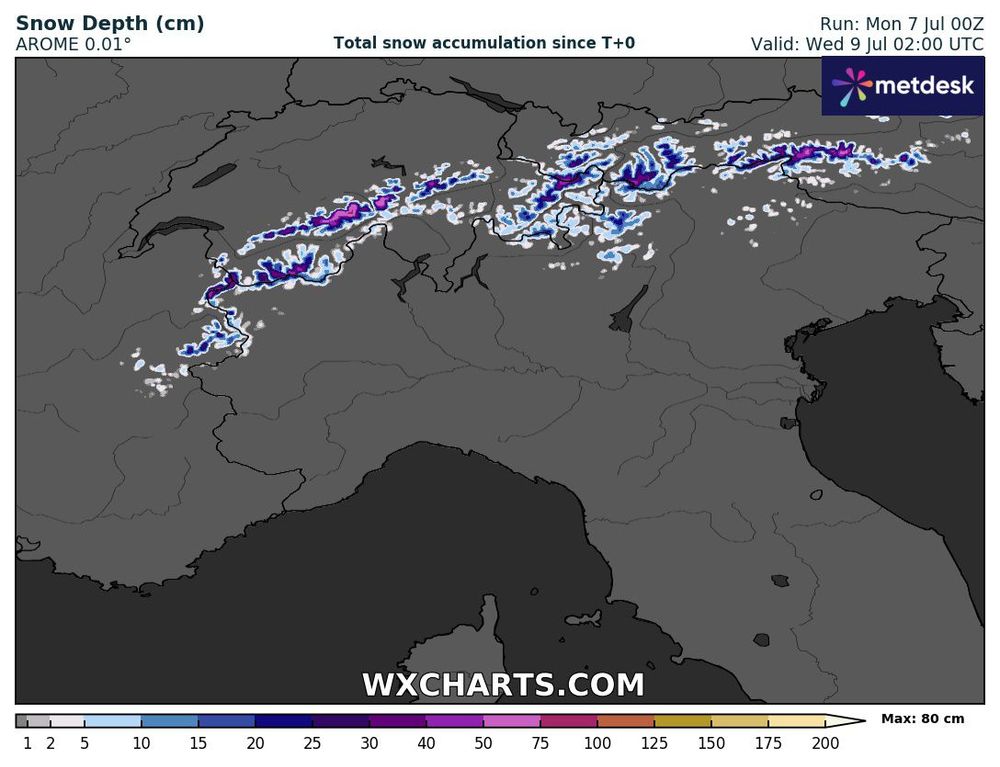
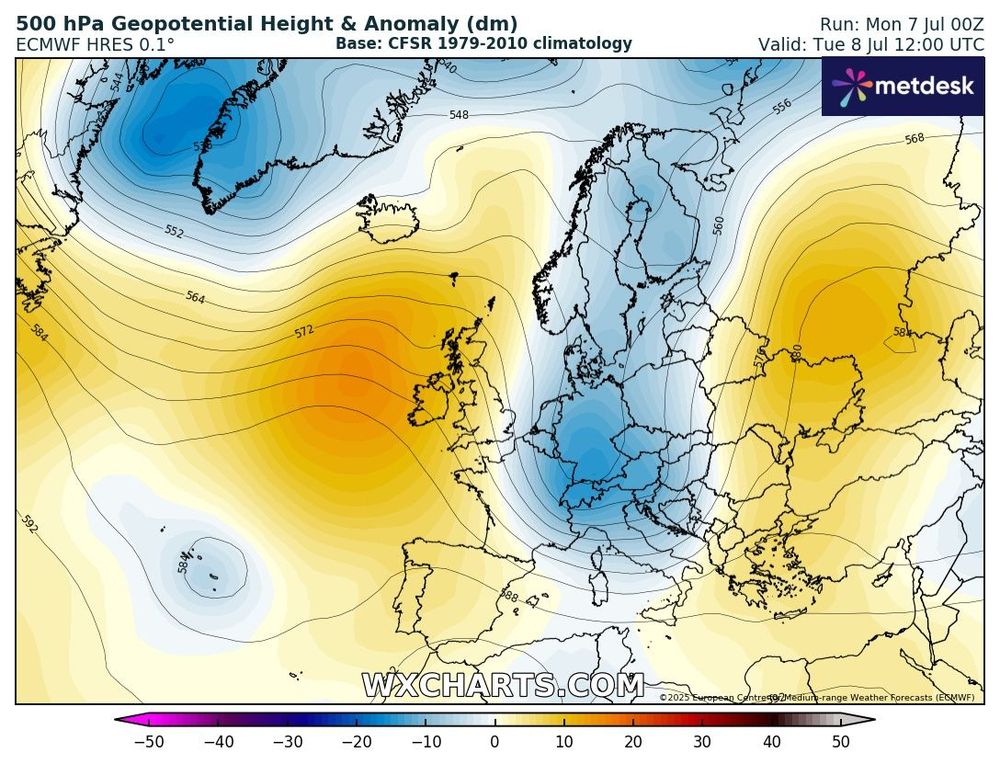
After a brutal start to the Alps melt season from an early season heatwave, we'll get a small reprieve with a series of cyclones drawing down cold, moist air from the north. In the highest elevations, there could be widespread accumulation of around 50 cm by Wednesday.
07.07.2025 08:15 — 👍 3 🔁 0 💬 0 📌 0

A large part of the western North Slope of Alaska with official forecast high temps over 90F today and tomorrow. This is borderline unprecedented if it happens. There are no weather stations in those 90F+ forecast areas though. So verification will basically be impossible. @alaskawx.bsky.social
03.07.2025 18:31 — 👍 139 🔁 60 💬 11 📌 8
New paper in ERL! We study the importance of resolution for the representation of climate extremes.
We use a new generation of km-scale models to show that many important details about temperature and precipitation extremes are hidden at CMIP6-like resolutions.
doi.org/10.1088/1748...
17.06.2025 10:56 — 👍 58 🔁 22 💬 3 📌 8
Our #CopernicusAtmosphere aerosol optical depth forecast initialised on 11 June showed a complex mixture of aerosols over Europe in recent days with smoke transport from Canadian wildfires interspersed with a plume of Saharan dust.
See the latest charts at atmosphere.copernicus.eu/charts/packa...
13.06.2025 14:23 — 👍 197 🔁 87 💬 7 📌 22
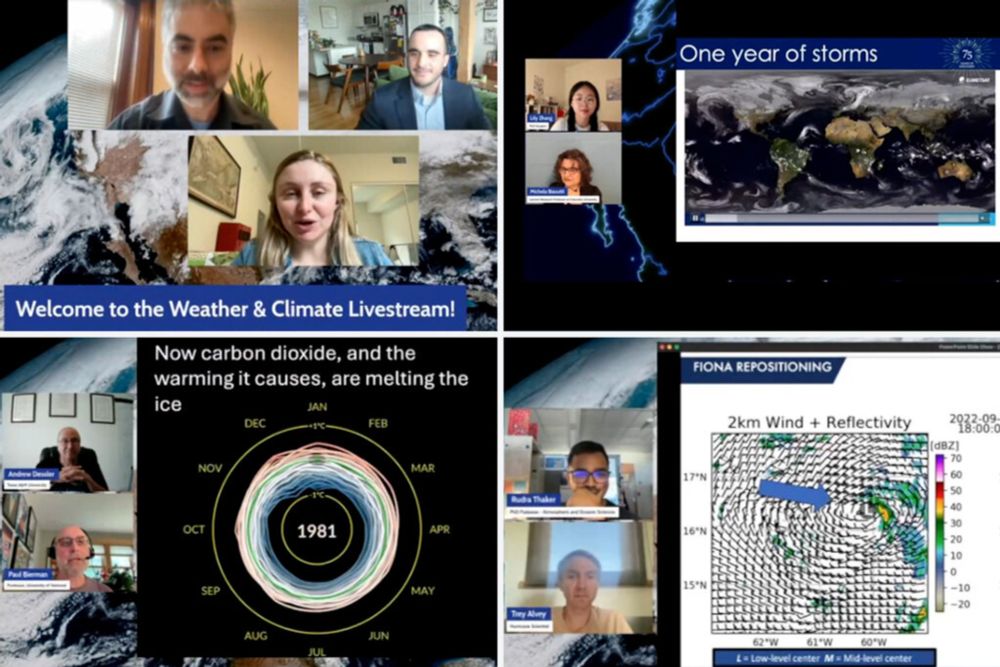
Alarmed by Trump Cuts, Scientists Are Talking Science. For 100 Hours.
To the scientists who shared their work and kept pressure building against the Trump Admin for 100 straight hours: thank you for your relentlessness.
We owe you a future of climate safety.
04.06.2025 12:44 — 👍 449 🔁 114 💬 7 📌 7
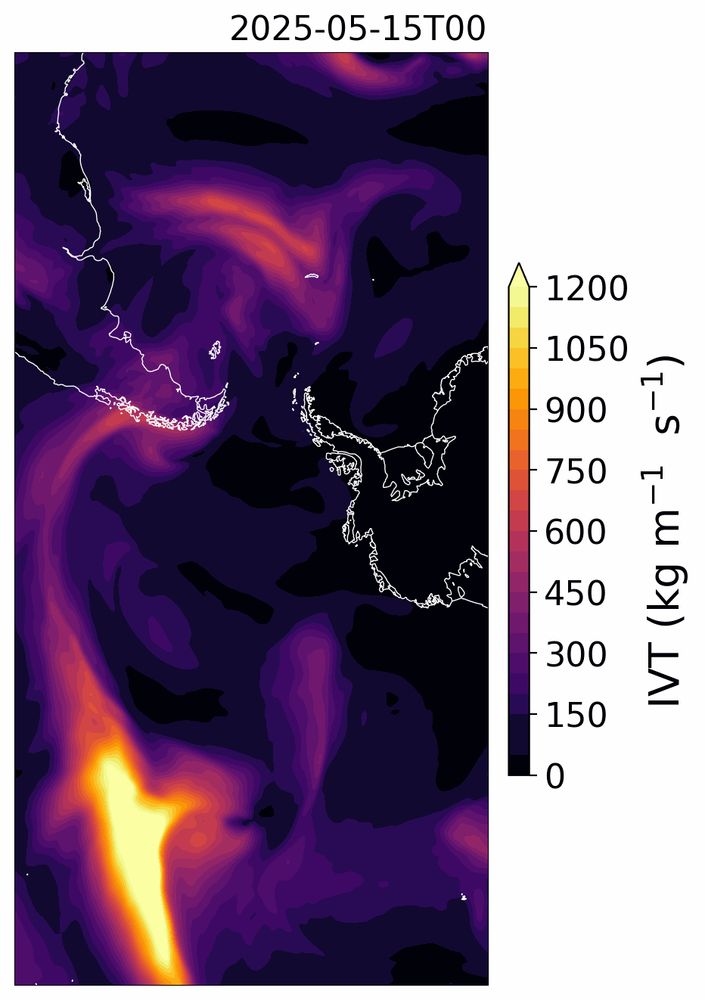
Following @jonathanwille.bsky.social 's recent post about an #atmosphericriver / #heatwave in West Antarctica, I did some digging in ERA5 to look at the drivers and impacts of the event. Sharing here for those who might be interested 🌨️🌡️👀
30.05.2025 11:45 — 👍 3 🔁 1 💬 1 📌 0
Climatology Scholar and Researcher|Crisis Social Worker
Focuses: Hurricanes, Rapid intensification, and Environmental justice
Twin mom|Physician spouse
Proud Louisiana Native based in New Orleans
Social Justice Warrior|Amateur Labor Movement History Buff
Host of The Ringer Fantasy Football Show.
Staff Writer at The Ringer & Spotify
Climate science and policy. Also the occasional photo and random thoughts. Currently serving as Commissioner at He Pou A Rangi, New Zealand Climate Change Commission; former IPCC vice-chair WGIII. Usual disclaimers...
Professor, Canada Research Chair - Sustainability transitions and climate change policy. University of Waterloo, 🇨🇦
Executive Director, Waterloo Climate Institute. IPCC LA 6AR, WGIII.
Climate change and energy transition economics and policy. Prof, Australian National University (ANU) Crawford School of Public Policy. Policy advisory Australian federal, NSW, QLD governments. IPCC AR5&6.
Speeding up the energy transition
Professor Energy Systems @TU-Delft
Lead author @IPCC @UNEP Gap Report
Chairman Technical Council @SBTi
Scientific Climate Council @NL
Energy coach @Houten
#energysky #climatesky
www.kornelis.blog
Climate Change, Energy Demand, Cities & Built Environment, Behavior Change | Lead of Urban Futures Hub @iiasa.ac.at
Full prof. of Climate Finance (Utrecht Uni.), visiting prof. (WU Wien), CEPR and SUERF research fellow, CLIMAFIN co-founder, Assoc. Editor (Ecological Economics). Climate stress test, biodiversity risk, political economy of climate change, macro.
Professor of Climate Policy, Hertie School Centre for Sustainability
Research on climate and energy policy, policy instruments, public support. Survey, lab and field experiments.
Professor for Solar Economy @UniLUT. Interested in sustainable energy-industry-CDR systems based on #100RE. Safe planetary boundaries matter.
http://youtube.com/watch?v=9jwJWK… -
http://lut.fi -
Postdoctoral oceanographer studying the ocean carbon sink 🦈🤿🕹️
🏠 @imev-mer.fr (CNRS-Sorbonne Université) as part of the Horizon Europe @tricuso.bsky.social project
💻 https://louisedelaigue.owlstown.net/
🚀 http://bit.ly/3HWFD5I
ClimaMeter is a rapid framework for understanding extreme weather events in a changing climate based on looking at similar past weather situations. Follow our study on https://www.climameter.org
Passionné de météorologie, amoureux de l'Océan et de la Nature en générale, mordu de cyclisme.
Météo-France sous le « ciel bleu », logique non ? Bienvenue sur notre compte officiel ! Retrouvez ici toutes nos actualités météo, climat et Vigilance.
Biologist and molecular ecologist, studying animals in Antarctica, e.g., sea spiders. I also use eDNA to study biodiversity all over the globe.
Web: MahonLab.com
Google Scholar: https://rb.gy/6z3tre
LinkedIn: https://tinyurl.com/4kvx48s
Ecologist of the urban persuasion, left twitter a while back, lurked over on tt, migrating over here :)
Doctoral Researcher working on Antarctic ice dynamics at PIK Potsdam 🇦🇶🧊
Co-Chair of APECS Germany ❄️
Junior Chief Editor at PolF 📑
Views are my own.
PhD student in Climate Dynamics @ethzurich.bsky.social | curious about forests, atmosphere-biosphere interactions and aerosols | sport enthusiast 🧗♀️🏒⛷️
PhD student at Uni of Liverpool ❄️ Modeling 1000 years of glacier response to climate in Greenland
📣 Exploring science communication through illustrations
Portfolio 🔗domjon.portfolio.site


